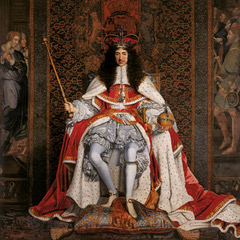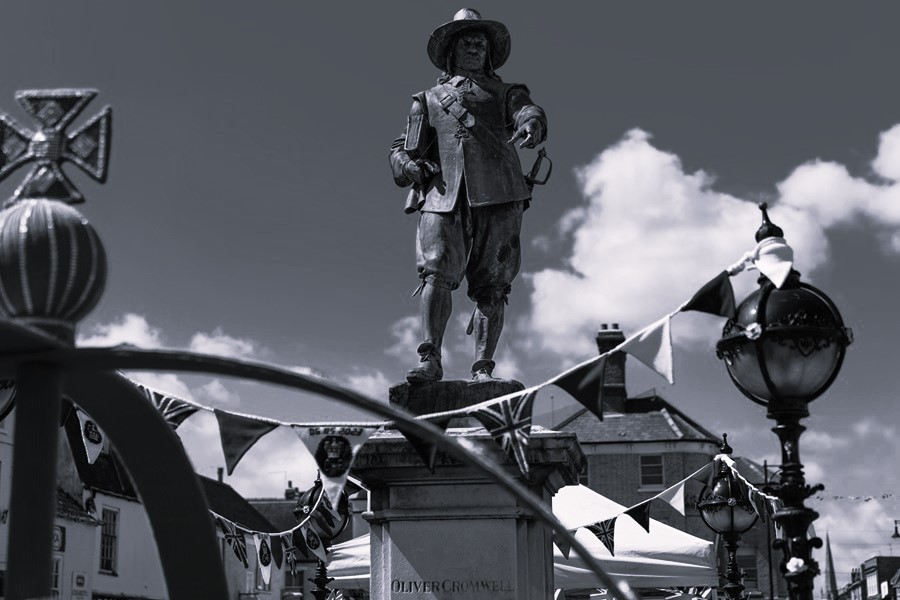On Saturday, 29 May 1660, the diarist John Evelyn wrote: “I stood in the Strand, and beheld it, and blessed God: and all this without one drop of blood, and by that very army which rebelled against him.” Evelyn was describing the triumphal procession into London led by Charles II which marked that King’s restoration after eleven years of republican government. The restoration appears to have been widely if not universally welcomed, yet only two years earlier Oliver Cromwell’s Protectorate had seemed quite securely established. How had things changed so quickly, and why had the British republic given way to a return of the monarchy?

When Oliver Cromwell died in September 1658, the republic did not appear to be in imminent danger of collapse. During the weeks that followed, the private reflections of former Royalists sounded rather like Lenin speaking in Zürich in 1916, to the effect that there would ultimately be a great change of affairs but probably not within their own lifetimes. But in England in 1658-60, as in Russia in 1917, events then moved very quickly indeed.
The British republic of 1649-60 never entirely escaped its origins in an army coup during the winter of 1648-9. This coup involved a purging of Parliament and opened the way to the trial and execution of Charles I in January 1649. This was followed by the abolition of the monarchy and the creation of a republic. Thereafter, the republic was always dogged by an underlying tension between the military and civilian leaders: they needed each other to survive but they found it difficult to establish an effective working relationship together.
The fact that Oliver Cromwell was uniquely able to hold the ring between these two groups helps to explain his remarkable political dominance from 1649 until his death in 1658. But after he died nobody else could fulfil this role. His eldest son Richard Cromwell succeeded him as Lord Protector for nine months, but his lack of military experience made him suspect to the army leaders and they toppled him in the spring of 1659.
After that a series of short-lived regimes succeeded each other with increasing rapidity, and the republican cause became so internally divided that government began to break down completely during the autumn of 1659. At the beginning of 1660, General George Monck, who commanded the army in Scotland, marched south and once in London he demanded the recall of the surviving members of the Long Parliament, which had been purged back in December 1648.
Monck’s motives remain mysterious. He was in secret touch with the exiled Charles Stuart, and he had been a Royalist early in the Civil War: it is possible that he was reverting to his earlier Royalism and consciously seeking a restoration of the monarchy. Alternatively, he may simply have felt that the republic was no longer able to maintain law and order, and that it was so bankrupt that it could not afford to pay the army. He may therefore have thought it in the army’s best interests, and the nation’s, to bring back Charles Stuart. Either way, Monck played a crucial role in facilitating the Restoration.
Meanwhile at Breda, in the Spanish Netherlands (now Belgium), where the exiled royal family was living, Charles issued a Declaration mainly drafted for him by moderate advisers such as Edward Hyde, later Earl of Clarendon and Lord Chancellor of England. This Declaration of Breda adopted a generous and non-vindictive tone, promising a general pardon and oblivion, no attempt to turn the clock back in favour of Royalists, a “liberty to tender consciences”, and government by the monarch together with a free Parliament.
This moderate Declaration was a political masterstroke. It convinced the majority of the nation that they had little or nothing to fear from a restoration of the monarchy. The result was that when the Long Parliament ordered fresh elections a strongly pro-Royalist Convention (later deemed a Parliament) was returned. On 8 May 1660, this Convention declared that Charles’s right and title to the throne had been in “every way completed by the death of his most royal father, of glorious memory”, and that he had therefore become King “immediately upon the decease of our late Sovereign Lord King Charles” on 30 January 1649. Officially, the Interregnum had never existed.
The principle that Charles II’s reign had begun in January 1649 was followed through with relentless precision and thoroughness. The regnal years took 1660 to be the eleventh year of his reign. All the acts of Parliament that had received Charles I’s assent up to 1641 remained in place; all the 1,200 or so ordinances that had not received the royal assent between 1642 and 1660 were declared null and void at a stroke. These measures placed the restored monarchy on a legitimate constitutional foundation, and this – together with the fact that only the surviving regicides were exempted from a general Act of Indemnity and Oblivion – helped to ensure that as few people as possible became victims of the restored monarchy. Those executed in 1660-2 for signing Charles I’s death warrant, or for posing a direct threat to his son, numbered only fourteen people.
For Charles II himself, who landed at Dover on 25 May 1660, and entered London four days later on his thirtieth birthday, the restoration was an extraordinary personal triumph. He was thrilled at the warmth of the welcome that he received as he rode into his capital, as described by Evelyn above. Charles’s easy geniality, relaxed manner, and colourful private life all suited the mood of the moment and seemed to affirm those who wished to react against the stifling Puritan restrictions associated with the Interregnum. Instead, Charles was the “merry monarch”, naturally gregarious and at ease with his subjects. Politically he was a realist and a pragmatist, well able to roll with the punches that were inevitable in a nation recovering from the bruising experiences of civil war and revolution. The result was that the restored monarchy – initially a regime “on probation” – has endured down to the present day and the reign of a third King Charles.







